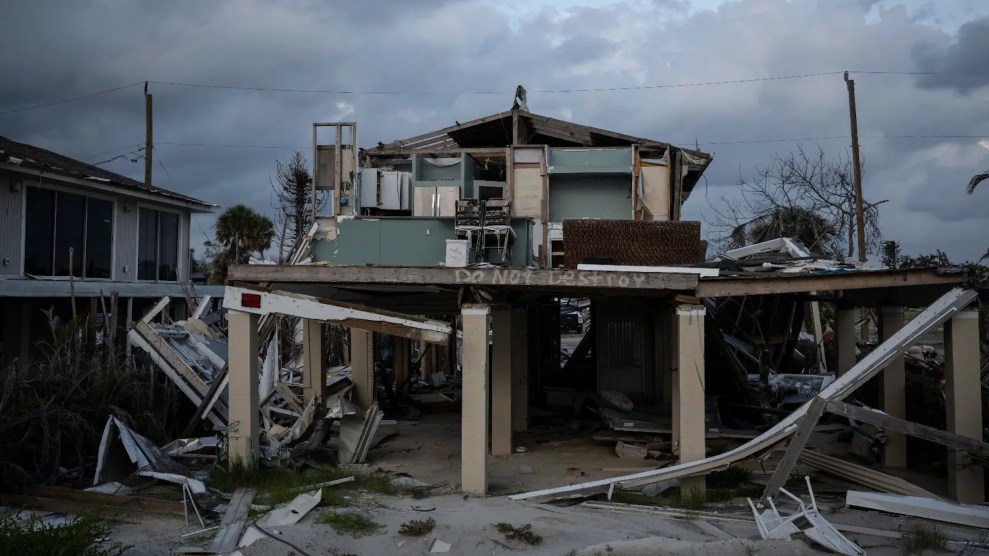OSH, Kyrgyzstan — Ours was an exceptionally hardy group of travelers; nonetheless, hitting the wall was inevitable. In the Stans, it always is.
Consider the winnowing process that brought the 24 of us, ordinary Americans from all walks of life, to a war zone in a region so remote that even the army refuses to patrol it: Only people with an interest in Central Asia wanted to go on Stan Trek 2000 in the first place, creating a self-selected applicant pool of former CIA operatives, wannabe mercenaries, and voracious adventurers. Of more than a hundred such lunatics, I chose 24 whose health, demeanor, and travel experience seemed to be most suitable for a region of the earth where temperatures vary from -20 to 150 degrees and health risks typically include food poisoning, altitude sickness, and armor-piercing shells. (Actually, make it 23; I brought along a housewife who’d never owned a passport in her life just to see what would happen to her.)
By the time we hit Almaty — until 1997 the leafy, pleasant, Vienna-like capital of the vast steppe nation of Kazakhstan — the Stan Trekkers had suffered trial by fire. Gonzo photographer Glenn Morales became the trip’s first casualty when he cracked his head open on the diving board at Ashgabat’s Hotel Nissa. “I was showing off to the girls,” he explained. Ashgabat’s 130-degree-plus temperatures (in the shade, something we never encountered there) sent six members of the group to their beds to nurse cases of heat stroke. Jeralyn Schusterman and her husband stayed in Tashkent an extra day and then braved a flight on Uzbekistan Airways to let her recover from her soured stomach. I took a diarrhea poll of the bus on the Tashkent-to-Bishkek highway; 22 out of 24 copped to a variety of explosive diarrhea for which the passage of at least a week is the only cure. (The general consensus was that the other two were lying.)
Then, just to keep things interesting, a third of my diarrhetic crew — those who ignored my advice to avoid salads, because vegetables here are fertilized with human waste — got food poisoning. While they spent a few days simultaneously crapping and puking, the rest of us stared out the dusty, scratched-up windows of our chartered Kyrgyz bus at the endless steppe, reaching out endlessly to the range of snow-capped mountains on the horizon — the Alataus — we knew we’d eventually have to cross.
Driving across Kazakhstan is like driving across a dozen Nevadas. Like our own bleak expanse is to our government, Kazakhstan once was to the Soviet Union: a national atomic and political dump. The terrain is blasted by countless Afghan and Cold-War era under- and above-ground test explosions, and its desolation provided a natural locale for countless gulags. The tragic irony is the Russians crapped the place up just as its fragile grasses were starting to recover from Genghis Khan, whose five million horses ate everything in sight and single-handedly changed its climate from grassy plains to desert scrub.
Spanning three time zones, Kazakhstan is massive and relentless — it covers the same area as the United States east of the Mississippi River — but its incredible emptiness is awe-inspiring, if you like big, open spaces.
A freak rainstorm hit the steppe: “I thought you said ‘it never rains,'” my sister-in-law Alice Chang kept reminding me as our bus struggled up the brutally steady incline toward Almaty. Chaos set in a few hours away from town. We came across the scene of a collision between a semi and a sedan. The car apparently had skidded while trying to pass the truck. A few cops milled around the carnage, writing on pads; the bodies of two men, each of them covered by tiny sheets, lay on their backs on the damp asphalt. One guy’s left leg was twisted 360 degrees around, spilling sinew and blood and gristle on the ground. Most of us Americans, accustomed to our culture of quickly-tidied death scenes and vanishing corpses, turned green.
Just an hour further along, traffic was diverted past yet another wreck; this time a Ford Explorer SUV with Uzbek plates had blown a rear tire and flipped forward. The driver’s body lay on the pavement, only his head covered with a handkerchief. Watery blood puddled up between his torso and a rise in the road.
The psychological effect of those three bodies was monumental; if bodies were piling up on a reasonably straight, well-maintained international highway, how bad was the road from Almaty into Kyrgyzstan going to be? At the last minute, I’d managed to secure a government permit to open the normally closed A362 highway from Almaty to Karakol on the eastern banks of Lake Issyk-Kul; the normal way is to go around the lake the other way, but that safer route tacks on anywhere from four to eight hours.
I advised everyone to take advantage of Almaty’s cosmopolitan pleasures to rest up for the trip across the Kazakh-Kyrgyz pass, but I only saw two other members of the group when I visited the Soviet-built Arasan Baths around the corner from the Hotel Otrar. Arasan is worth the trip to Central Asia by itself; large Russian men in Speedos beat you up on a heated marble slab, subject you to painful chiropractic neck cracks, thrash you with oak leaves and dispatch you to an alternating series of unbelievably scalding saunas and ice-cold plunge baths. Naturally, vodka is served, as my brother-in-law Bill Smith and I were painfully made aware by a sloshed Kazakh man who followed us around while insisting we come to his home to drink and bed his teenage daughters.
Karl Stocker’s Stan Trek came to an end the next morning, as we boarded the bus. “I just know that I won’t be able to make it,” he said, and looking at him it was clear that he was right. Diarrhea had had Karl in his grip for more than two weeks. A strong, sturdy guy at the outset (this despite arriving in the Stans without his check-in luggage, which was lost by Air France) he was dehydrated, emaciated, and unbelievably weak. If Karl had risked altitude sickness in the Kyrgyz Alatau mountains, it might not have been possible to medevac him.
We left Karl in Almaty to try to make his way back to the States. By early evening we were at Kazakh customs, a rusty shed guarded by a ferocious mid-sized poodle. “You’re kidding me,” the Kazakh military policeman growled when I handed him a stack of 23 passports to log into his yellowing registration book. “Too much fucking work. Just go, but don’t stop in the neutral zone. It’s mined.”
Looking back on it now, that was the moment when things fell apart, when we hit the wall. As we lumbered down the dirt road in the 30-kilometer Kazakh-Kyrgyz neutral zone at one or two kilometers an hour, the sun started to set. We were hours away from Karakol, our destination, which meant we’d likely end up sleeping on the bus … again. We hadn’t seen anything to eat or drink since Almaty. The thin air was giving us headaches. The road was awful, lurching back and forth as we dodged big rocks and craterlike potholes. “I have to go to the bathroom,” someone said.
“We can’t stop now,” I responded. “There are mines.”
“I don’t care about mines,” someone else barked. ” I need to go NOW.”
When a human being is so ravaged by his acidic bowel movements that he is willing to do the deed in a minefield, he has exhausted his last reservoir of sanity. It’s over. All one can do under such circumstances is to stop the bus.
We rolled into Karakol around 10 p.m., found the youth hostel where we were staying, and sat down for dinner. Within minutes, people were shouting at me.
“We’re tired of the bus!” Glenn yelled. “I want a genuine cultural experience!” He was wild-eyed, exhausted, obviously beyond his breaking point.
“What cultural experience?” someone yelled back. “You haven’t spoken to anyone since you got here!”
“I’m staying here,” someone else said. By the time the shouting was over, six people — in my opinion, those who hit the wall first and hardest — remained behind when the bus left at six in the morning for the tough mountainous trip to Osh, the ethnically-tense provincial capital of the Fergana Valley.
Southern Kyrgyzstan is stunning; connoisseurs of the region call the small, poor, resource-empty nation “the Switzerland of Central Asia.” There’s a crisply-clean, high-altitude, warm-water lake, snow-capped mountains and possibly the best whitewater rafting on earth if you have the gumption to schlep all the way out there. Because there’s nothing to mine or drill, there’s no pollution whatsoever.
Kyrgyzstan is also the low-hassle ‘Stan; police checkpoints are few and far-between even when there’s fighting nearby, and the locals are friendly and helpful. The fragile post-Soviet economy collapsed in 1998 when the government devalued the Kyrgyz som to match the American dollar, and the results are obvious: Gangrenous beggars wearing World War II medals line pedestrian underpasses in the cities. The roads suck. After a four-hour detour around a collapsed mountain tunnel and a three-hour wait for road repaving — your Kyrgyz tax soms at work! — the 17 remaining Stan Trekkers limped into the depressing Soviet spread of Osh at 10 a.m. the next day. Everything was arranged: Two rugged Russian drivers were waiting with Afghan War-surplus military half-track vehicles to take us into Tajikistan. If we made it to Dushanbe across the A372 Northern Pamir Highway in the allocated three days, we’d catch an Afghan Northern Alliance flight to Afghanistan, hop around the Taliban lines, and make our way back to our flight out of Bishkek somehow.
We were grouchy, dusty and hungry, but it was nothing a few hours showering and eating breakfast wouldn’t cure before taking off for the Sary-Tash border outpost.
“I have bad news,” announced one of the drivers, who reminded me of late ’80s Dolph Lundgren. “The border is closed. Twenty Kyrgyz Army troops were killed yesterday by some fighters, we don’t know who they are. There’s fighting three kilometers away from the city center. But we’ll still take you if you want us to.” A few days later, four American mountaineers were kidnapped by these same Tajik insurgents and threatened with execution. After they escaped by pushing their guard off a cliff, troops manning a Kyrgyz Army station told the climbers the soldiers had known they were being held hostage, but had been too afraid to do anything about it.
“I thought you said the border was closed, and that there is fighting right on the road,” I pointed out.
“It is. There is. But if you want us to try, we’ll try.”
“Will we make it?”
“No.”
“Any chance at all?”
“No chance.”
Here were men among men, ultimate stud hombres, guys who we had paid and who would do whatever we asked of them, even if it meant certain death. How could you not follow such pinnacles of bravery into the breach, going out in a blaze of glory as the artillery of the Islamic Movement of Uzbekistan blew you into the next dimension?
The next morning, we bribed airport officials to cancel other passengers’ reservations, and boarded the last three flights out of Osh before the airport closed. I, too, had hit the wall.















